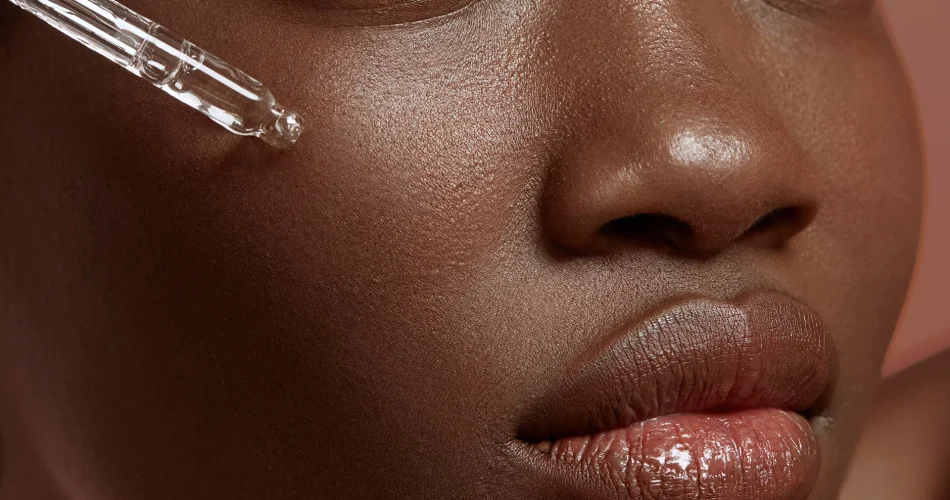Wondering what exactly salicylic acid does to your skin, and what best ways are there to reap its benefits? then read on on this specials from EveryDay Stunner!
We consulted dermatologists to help break down exactly how salicylic acid works on the skin, who should (and shouldn’t) use it, and why it’s such a popular choice for staving off breakouts.
What is a Salicylic Acid?
First off, let’s establish what salicylic acid is. It’s a little complicated, but the exact structure of it is important in explaining why (and how) it works so well. When it comes to skin-care products, there are two classes of acids you’ll see often: beta hydroxy acids (BHAs) and alpha hydroxy acids (AHAs).
Salicylic acid is a beta hydroxy acid. It’s well-known for reducing acne by exfoliating the skin and keeping pores clear. “This means the hydroxy part of the molecule is separated from the acid part by two carbon atoms, as opposed to an alpha hydroxy acid where they’re separated by one carbon atom.”
Furthermore, it is actually derived from willow bark, says cosmetic chemist Ron Robinson, and it belongs to a class of ingredients called salicylates. Are you still with us? Good, because this is where it gets fun. This structure is important because it makes the acid more oil-soluble so it can penetrate into the pores of the skin,
Both alpha and beta hydroxy acids exfoliate the skin, but AHAs are water-soluble, while BHAs are oil-soluble, Some of the major Examples of AHAs, for reference, include glycolic and lactic acids.
Generally. In other words, oil-soluble ingredients can penetrate the skin at a deeper level than their water-soluble counterparts.
AHAs work well on the skin’s surface to loosen old, dead skin and reveal fresh newer skin, Salicylic A works deeper and is able to penetrate into the pores to unclog them leaving you with a very smooth and easy going skin surface.
– More Articles from Around the Web –
Functions of Salicylic Acid on the skin?
What all of this means is that salicylic acid can get deep into your skin to do its job. This quality is precisely what makes salicylic acid such a potent ingredient for targeting acne this is especially for blackheads and whiteheads.
Once it penetrates the skin, salicylic acid “dissolves skin debris that clogs pores, acts as an anti-inflammatory and also helps red inflamed pimples and pustules go away faster,”
The ingredient can penetrate so deeply into skin that actually breaks down the connections between skin cells, according to Schueller and Wesley. “Once it has penetrated the skin, the acid part of the molecule can dissolve some of the intracellular ‘glue’ that holds skin cells together,” says Schueller.
Salicylic A as an exfoliant
This breaking down of skin cells also promotes exfoliation. Salicylic acid is considered a keratolytic medication, which means that it’s perfect for supreme exfoliation. “Keratolytic medications cause softening and sloughing of the top layer of skin cells,”.
The acid also loosens and breaks apart desmosomes (attachments between cells in the outer layer of skin). “This ‘desmolytic’ action encourages exfoliation of skin and unclogging of pores,” says Sue Ann Wee, a dermatologist in New York City.
“One thought etiology of acne is that the skin cells do not behave normally, and rather than sloughing off through a healthy skin cell cycle, they stick together and clog the pores, creating cysts and blackheads,” says Nazarian. “Salicylic acid aids in removing and loosening these skin cells and helps to dissolve the blackheads.”
Salicylic acid works best on blackheads and whiteheads
There are three factors that contribute to acne: an abnormal sloughing off of skin cells, excessive oiliness, and the action of P. acnes bacteria. Salicylic acid helps with the first cause by dissolving the type of skin debris that clogs pores and causes acne.
Therefore, the best acne to treat with salicylic acid are blackheads and whiteheads. These acid can directly dissolve the keratin plugs and regulate the skin cells. It does have some effectiveness against cystic acne due to its antibacterial activity, but less so than the classic blackheads and whiteheads.
Demerits of using salicylic acid
You can actually use too much salicylic acid, which can become a problem. The major primary negative side effect of it, is its ability to irritate and dry skin in those that are very sensitive or those who overuse it.
- Dryness
- Peeling
- Skin Irritation
Depending on the concentration and the number of applications, some people may experience dryness, peeling, redness, and some skin irritation.
For this reason, those with skin that’s already severely dry or sensitive should consider avoiding SA altogether. It’s also not the best choice if you are pregnant or taking certain medications, including blood thinners.
The most critical aspect of it is that applying salicylic acid or any salicylate to very large portions of your body can lead to salicylate poisoning, and you don’t want your skin looking irritated or badly dealt with, So just don’t apply a layer of it all over, it is advised to stick to only acne-prone areas to get the best results.
The best Salicylic Acid-containing skin-care products to use for acne
We have done our research and tested many skin care products and we can boldly recommend the best Salicylic Acid-containing skin-care products to use for acne, some of them are enlisted below.



